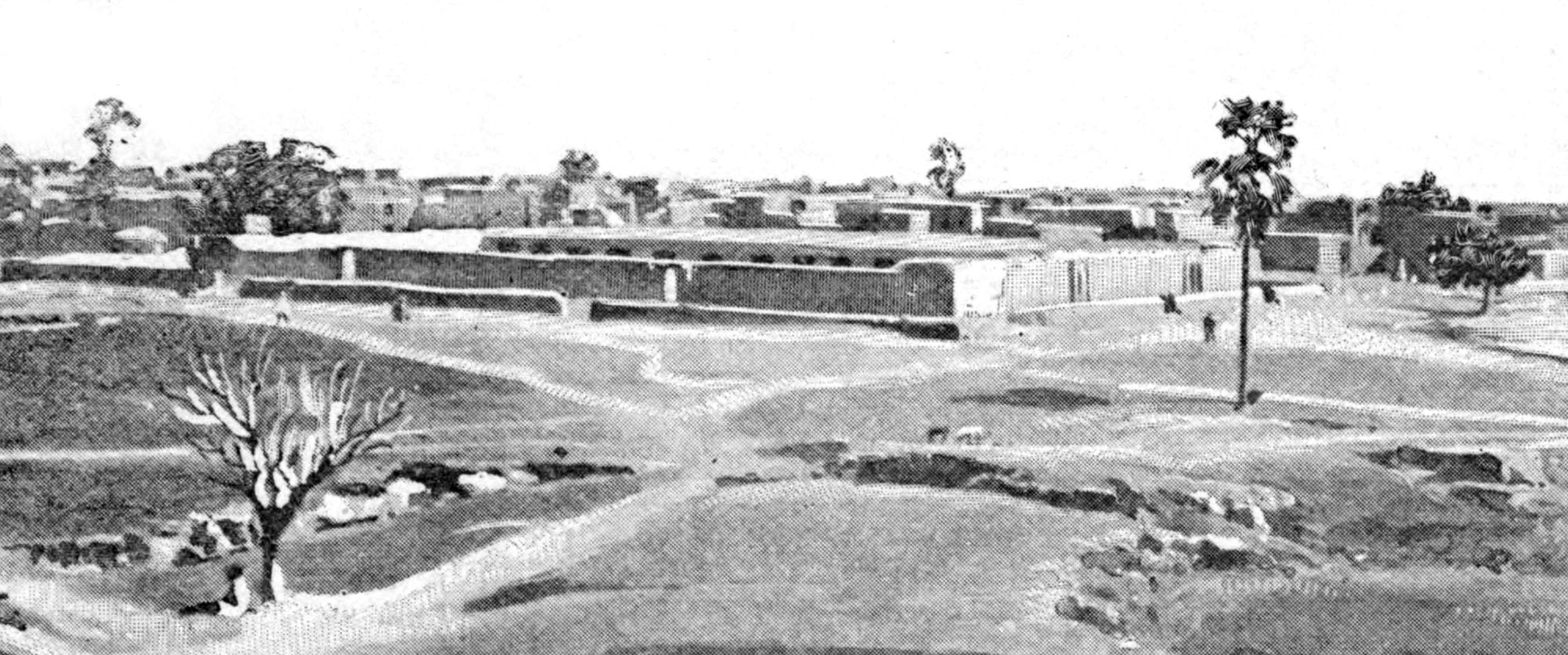|
Sidi Yahya Mosque
The Sidi Yahya Mosque (), also known as the Mosque of Muhammad-n-Allah, is a mosque and madrasa of Timbuktu in Mali. The construction of the mosque began in 1400 under the leadership of Sheikh el-Mokhtar Hamalla of Timbuktu and was finished in 1440. The mosque was named after its first imam, Sidi Yahya al-Tadelsi. It is part of the University of Timbuktu, which includes the madrasas of Sidi Yahya, Djinguereber and Sankore. The mosque is a typical example of earthen Sudano-Sahelian architecture but also exhibits distinctive forms of plan and ornament. Parts of the Mosque of Sidi Yahya were destroyed by Ansar Dine jihadists on 2 July 2012, following the Battle of Gao. These elements were later reconstructed under the direction of UNESCO team. History The construction of the mosque of Sidi Yahya, sometimes written Sidi Yahia, began in 1400 by Sheikh El-Mokhtar Hamalla. The Sidi Yahya mosque is one of the oldest mosques in Timbuktu and holds special significance: when the Toua ... [...More Info...] [...Related Items...] OR: [Wikipedia] [Google] [Baidu] |
Islam
Islam (; ar, ۘالِإسلَام, , ) is an Abrahamic religions, Abrahamic Monotheism#Islam, monotheistic religion centred primarily around the Quran, a religious text considered by Muslims to be the direct word of God in Islam, God (or ''Allah'') as it was revealed to Muhammad, the Muhammad in Islam, main and final Islamic prophet.Peters, F. E. 2009. "Allāh." In , edited by J. L. Esposito. Oxford: Oxford University Press. . (See alsoquick reference) "[T]he Muslims' understanding of Allāh is based...on the Qurʿān's public witness. Allāh is Unique, the Creator, Sovereign, and Judge of mankind. It is Allāh who directs the universe through his direct action on nature and who has guided human history through his prophets, Abraham, with whom he made his covenant, Moses/Moosa, Jesus/Eesa, and Muḥammad, through all of whom he founded his chosen communities, the 'Peoples of the Book.'" It is the Major religious groups, world's second-largest religion behind Christianity, w ... [...More Info...] [...Related Items...] OR: [Wikipedia] [Google] [Baidu] |
Great Mosque Of Djenné
The Great Mosque of Djenné ( ar, الجامع الكبير في جينيه) is a large brick or adobe building in the Sudano-Sahelian architectural style. The mosque is located in the city of Djenné, Mali, on the flood plain of the Bani River. The first mosque on the site was built around the 13th century, but the current structure dates from 1907. As well as being the centre of the community of Djenné, it is one of the most famous landmarks in Africa. Along with the " Old Towns of Djenné" it was designated a World Heritage Site by UNESCO in 1988. History The first mosque The actual date of construction of the first mosque in Djenné is unknown, but dates as early as 1200 and as late as 1330 have been suggested. The earliest document mentioning the mosque is Abd al-Sadi's ''Tarikh al-Sudan'' which gives the early history, presumably from the oral tradition as it existed in the mid-seventeenth century. The ''Tarikh'' states that a Sultan Kunburu became a Muslim and had ... [...More Info...] [...Related Items...] OR: [Wikipedia] [Google] [Baidu] |
Madrasas In Mali
Madrasa (, also , ; Arabic: مدرسة , pl. , ) is the Arabic word for any type of educational institution, secular or religious (of any religion), whether for elementary instruction or higher learning. The word is variously transliterated ''Madrasah arifah'', ''medresa'', ''madrassa'', ''madraza'', ''medrese'', etc. In countries outside the Arab world, the word usually refers to a specific type of religious school or college for the study of the religion of Islam, though this may not be the only subject studied. In an architectural and historical context, the term generally refers to a particular kind of institution in the historic Muslim world which primarily taught Islamic law and jurisprudence (''fiqh''), as well as other subjects on occasion. The origin of this type of institution is widely credited to Nizam al-Mulk, a vizier under the Seljuks in the 11th century, who was responsible for building the first network of official madrasas in Iran, Mesopotamia, and Khorasa ... [...More Info...] [...Related Items...] OR: [Wikipedia] [Google] [Baidu] |

.jpg)

